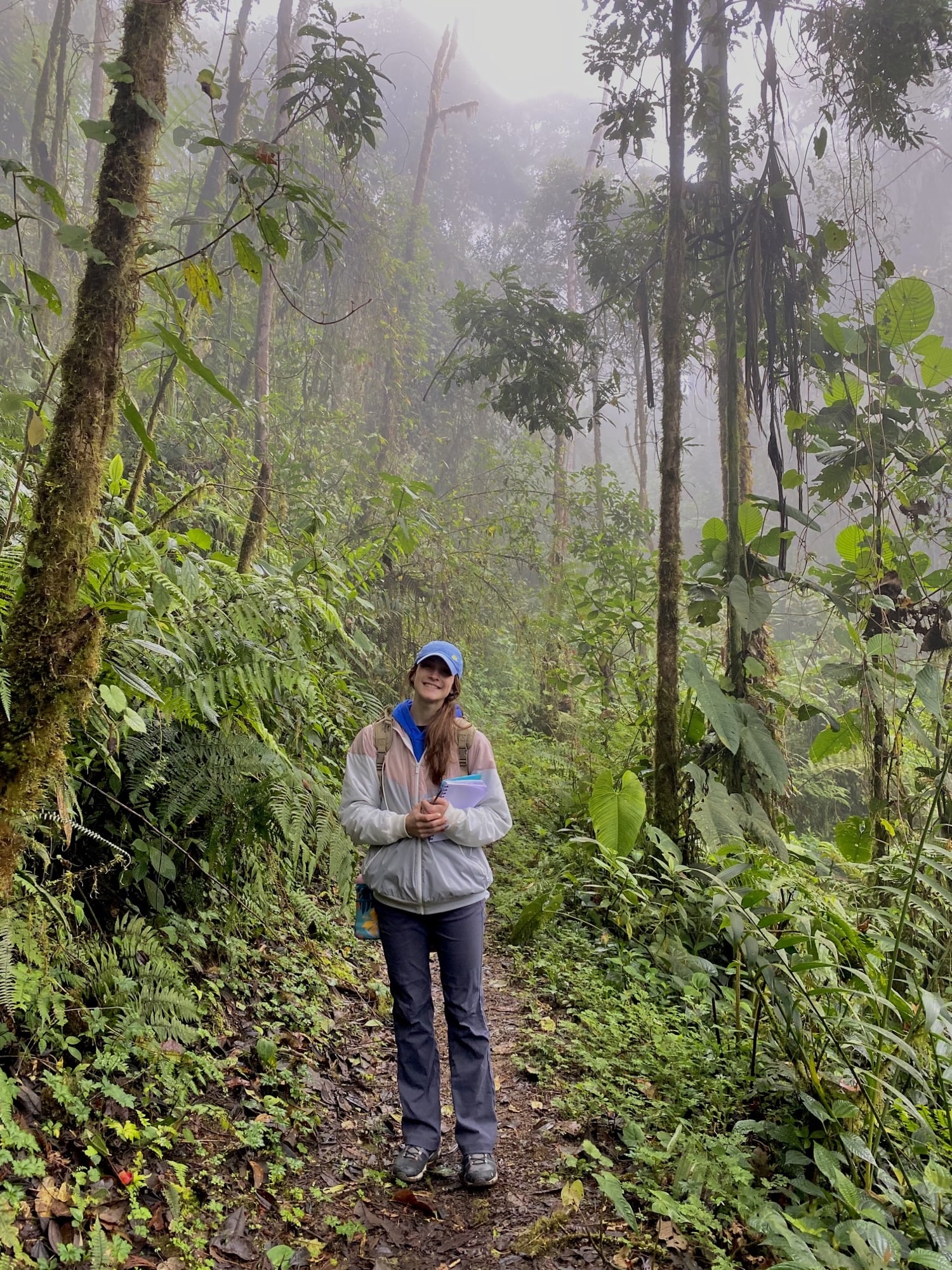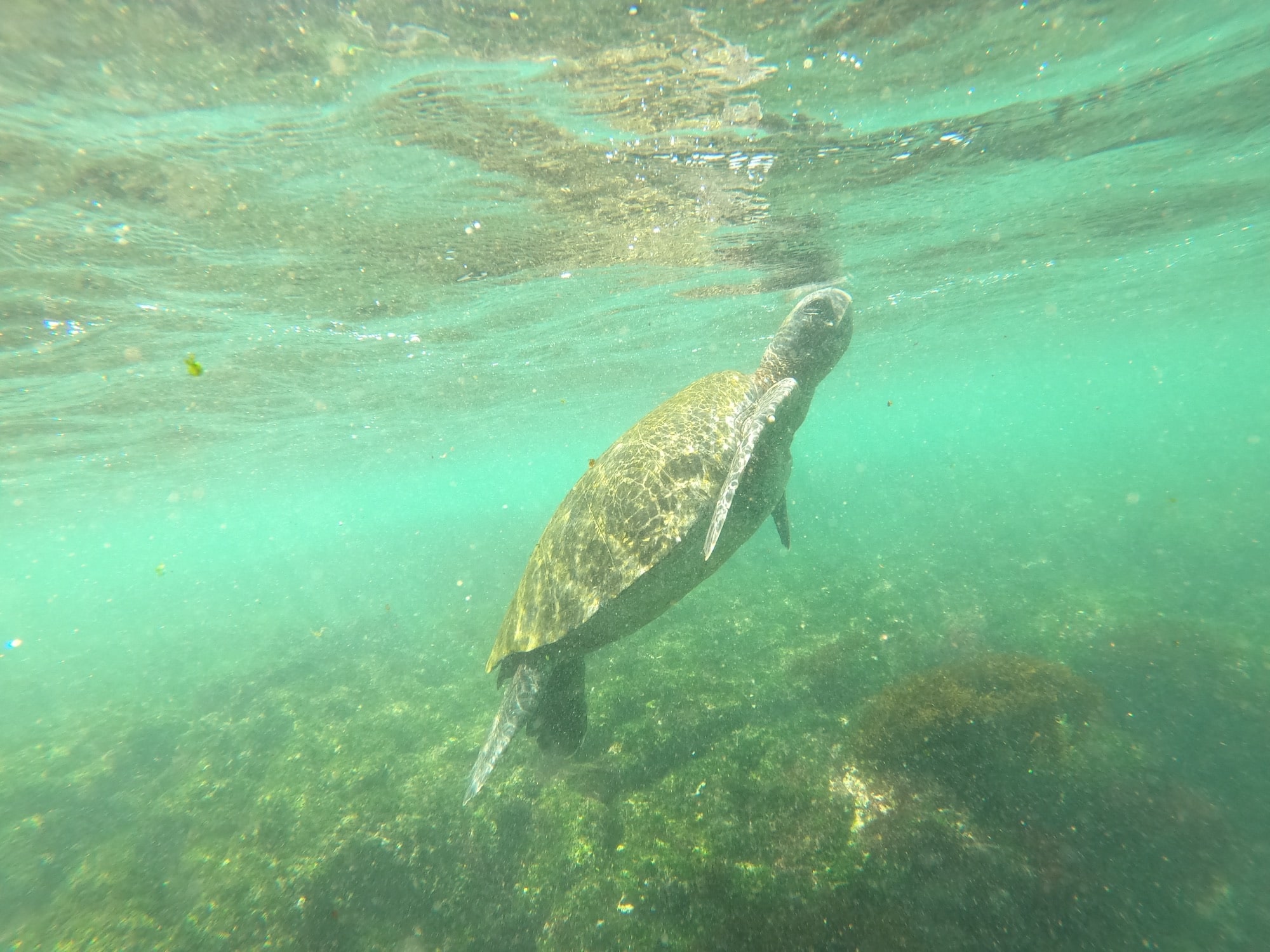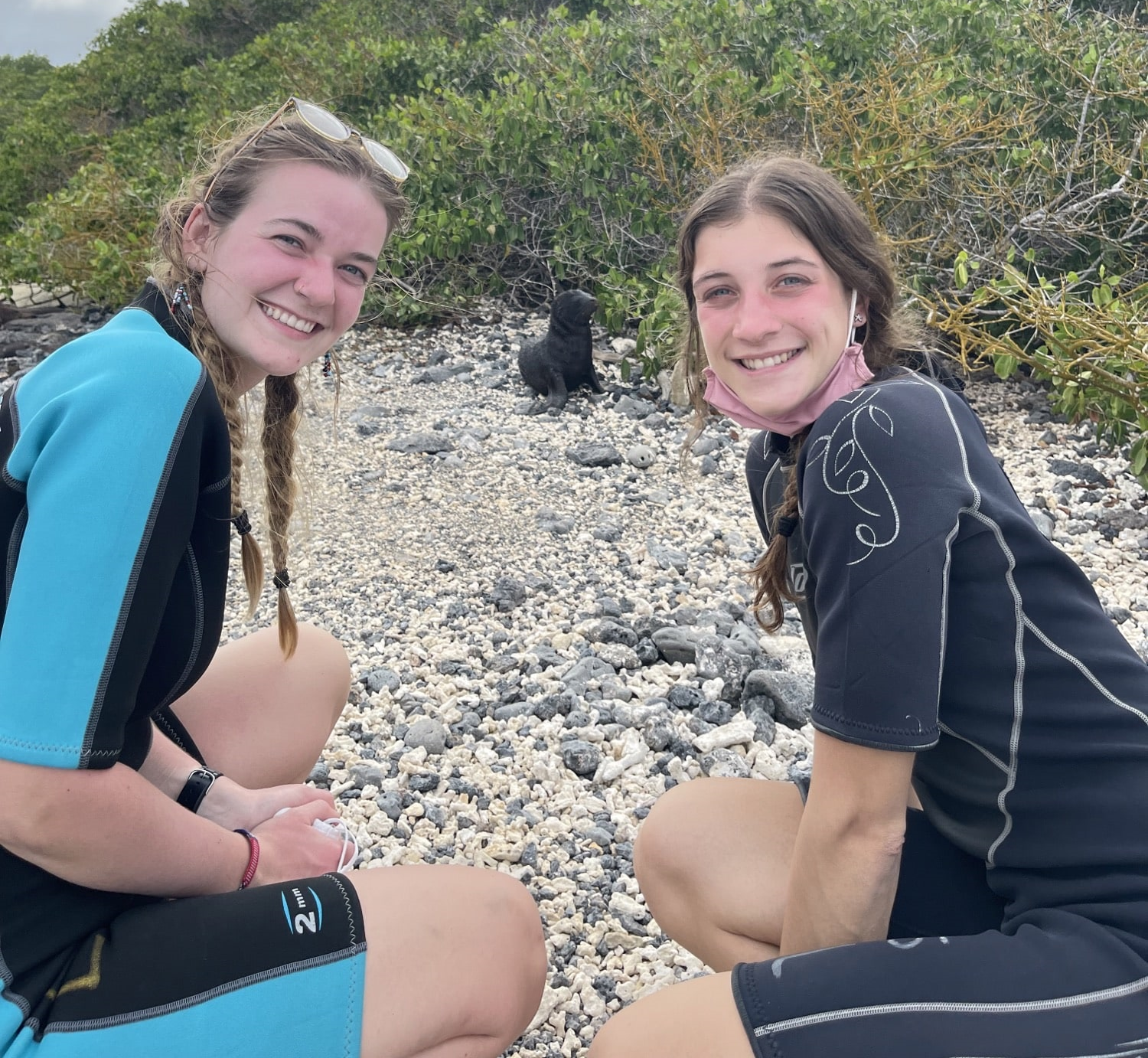
Student Blog: Getting to Know the Galapagos | Taylor Lamprecht
January 21, 2022
Over Christmas break, I had the amazing opportunity to travel to Quito, Ecuador and the Galapagos Islands for 11 days to learn about the natural history and biodiversity of these areas led by environmental science professor, Dr. Brian Hazlett. On the trip, I was able to learn, see, and experience so many incredible things, while having an amazing time doing it.

While in Quito, I learned about the history and culture of the city while getting to experience it firsthand through authentic meals, bartering with vendors in local markets, exploring the city, and much more! One thing that really stood out to me, was the simplicity of the lifestyle in Quito. The homes were very minimalistic and there were always multiple people walking, running, or riding bikes throughout town. I appreciated this simple lifestyle, and it was interesting comparing it to our way of life in the United States.
After a few days in Quito and after staying the night in a cloud forest, we flew to the Galapagos Islands. The Galapagos Islands and Charles Darwin are just a few of those classic topics that I've learned about in science classes throughout my life. Being an Environmental Science and Biology major, visiting the Galapagos Islands has always been a major bucket list goal for me. On the Islands, we hiked along trails, went snorkeling, visited conservation centers, walked through lava tunnels, and much more. The Galapagos Islands are home to multiple unique plant and animal species that can only be found on the islands. The Galapagos Giant Tortoise, Galapagos Sea Lion, Marine Iguanas, and Galapagos Penguins are just a few of the endemic species we were able to observe in their natural habitats. Of course, we were able to see Darwin’s infamous finches throughout the Islands as well. Having the opportunity to watch these animals was a very moving and exciting experience that I will never forget.


Because of human activity, many of the unique and endemic species of the Galapagos Islands are threatened or endangered. On the Islands, there is an emphasis on conservation in order to preserve these species. Beverages were served in reusable glass bottles, straws were metal or biodegradable, and paper bags were used instead of plastic ones. It was very neat to see this being done on such a large scale and that action is being taken to protect the Islands.
Not only did I learn about the places we visited, but I learned a great deal about myself on this trip. Quito is a Spanish speaking city, and many people spoke Spanish on the Islands as well. I don't know much Spanish, so while on the trip there were a lot of connections that I was not able to make because of the language barrier. This made me realize that I would like to learn another language in order to communicate and connect with more people in my life.

One of the most important things I took away from this experience is that there is so much more to life than what we know. This trip was extremely eye opening for me. It gave me just a small glimpse at what is out there to explore and learn, and it has prompted me to want to continue traveling, learning, and having these amazing experiences. I was hesitant to take this trip at first, but it truly was a life changing adventure for me as lifelong friendships and memories were made. If you are thinking of taking one of these trips, I strongly encourage you to at least look into it and consider it – I am glad I did.